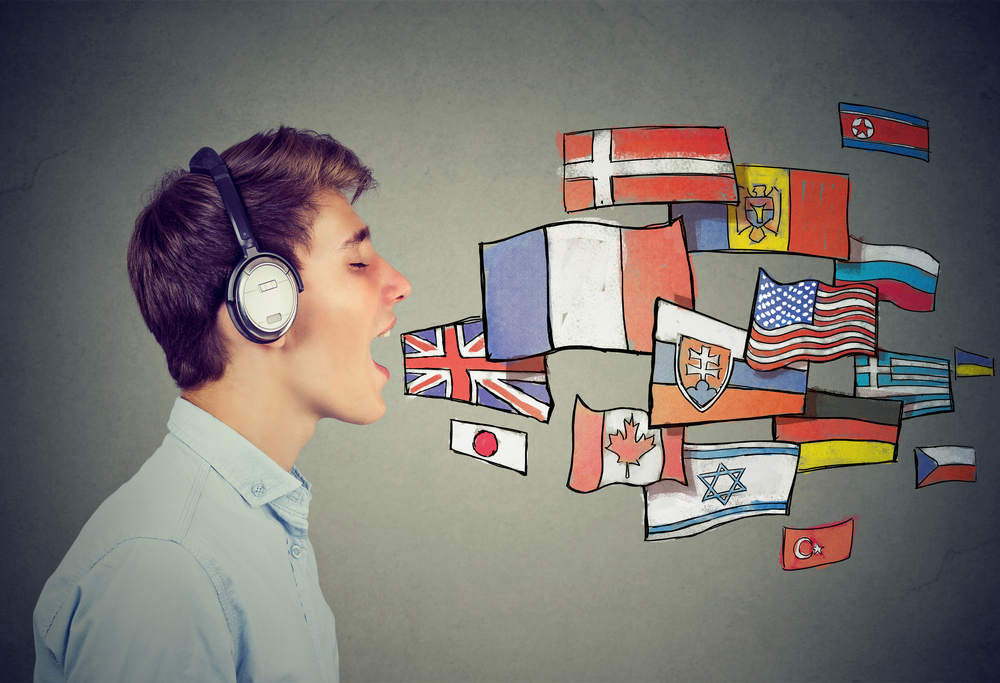
When most people think of language learning, they remember their high school classes. Typically classes were comprised of vocabulary lists that they had to memorize weekly for a vocab test (and just as quickly forget), fill-in-the blank quizzes where you had to conjugate the verb according to the subject, and even some mundane tasks like filling out the verb conjugation chart. Do you know what all of these things have in common? No polyglot (someone who speaks four languages or more) would ever suggest one of these activities as a viable way to master language.
If you’re going to get tips about language learning, shouldn’t it be from someone who has learned a language from scratch many times as an adult? We think so!
Many language teachers (or popular language learning apps) claim to improve your fluency -and some do – but we think asking someone who has already done it multiple times reaps the best advice.
We asked the polyglots we know to give us their most salient tips. BTW, I personally have only learned 2.5 languages so far: Spanish to native-like fluency, French to professional proficiency, and Japanese to advanced beginner level. I am not quite a polyglot yet, but I 100% agree with all of these tips.
Rule #1 for Learning a New Language
DO NOT LOOK UP EVERY WORD YOU DON’T KNOW. Remember when you were a kid around age two or three? Probably not. But your parents read you TONS of books. And you definitely did not know what every word meant, and guess what? You’re fluent. This is because your brain, and you, took notice of the most-used words. This is often why a child’s first word is “No.” They relate the word to the context, and they learn what it means very quickly. Same with “mama,” “dada,” and “water” or “milk” (or the word used for breast-feeding time). So in the same vein, if you are reading or watching TV with subtitles, do not look up every word. Your brain is categorizing the words and holding on to the words used most often. It’s efficient like that, so you can trust the process.
Also, if you look up every word, you often stop the learning process early due to frustration and boredom. But if you keep reading or watching, then you’re likely to get in double the time with the language, thus, learning more of it. Exposure is the key.
Rule #2 for Learning a New Language
Do not worry about mistakes. Again, think about when you were a kid. You definitely were not afraid of making a mistake when talking; that’s actually how you learned to talk, by making mistakes. The goal when you were a child was to get your point across. In the beginning, all you could do was cry when something was wrong, but as you grew and learned a few words, you let people know when you wanted water, milk, or to read a book. But you didn’t start with, “Could someone please get me a glass of water?” You started with, “Wawa,” or some sound that represented water. Obviously, most adults do not want to speak like a child, but the more you speak, the better you will speak. Most adults only want to speak once they are perfect in the language, but those adults can have a hard time getting fluent, like myself.
I took formal, academic Spanish lessons for eight semesters, never really speaking, and often hiding in the back row of my university Spanish classes. Only once I started working at a school with only Spanish speakers did I finally have to speak. And lo and behold, I was at a high level of fluency in about 12 months. (If I had only started speaking more from day one… I would’ve been fluent way earlier). So just start talking. Remember, it’s impressive that you’re learning a new language (and brave!) so stop thinking, and start talking.
Rule #3 for Learning a New Language
Be consistent. Getting to a high level in any romance language (if your native language is a romance language or English) will take at least 300 hours of exposure and speaking, and to get to a really good level, it’s going to take 600 hours. And for Asian languages (if your native language is English) it will take 600 hours minimum for any basic level, and 1200+ for a truly good level (meaning you’re not searching for words all the time, and can speak clearly about any topic).
So, planning out your study is key. If you are going to do 30 minutes a day, then do not stop. If you stop, then you will go backwards, and it’s almost as if you were erasing what you’ve already done. I did this with Japanese. Life got busy, as it does, and I thought I would skip just one month of my online conversation lessons in Japanese. Well, the next time I thought about Japanese again, it had been almost a year since I had spoken it. What a horrible mistake.
When I booked another lesson with my instructor, she said my level had gone down considerably, but the good news is, it comes back fairly quickly, as well. So I had to spend about 40 hours getting back to where I was. Even though 40 hours seems like a lot, I do 4 hours a week, so in about 2.5 months, I was back! The lesson I learned was that I can NEVER stop my lessons again, even if I have to go down to two lessons a week, I have to keep it up, no matter what.
The same goes for self-study. Stick to your schedule, whatever that schedule is, and be consistent with it.
Rule #4 for Learning a New Language
Write down useful phrases. One of the first words I learned in Spanish was “Here” (like when you’re handing something to someone). I realized very quickly that I was always handing things to people at work completely mute. In English, I would always say, “Here.” So I watched movies and started writing down useful phrases like, “Where is…?,” “Here/take this,” “Excuse me,” “I need…,” “How much?” and others. Any time during the day I said something or thought something that I typically say all day, I would write it down to look up during my language study time, or for when I met with my teacher.
A lot of times textbooks teach you academic words or formal vocabulary, but sometimes they miss the mark with most-used phrases and words. So take your learning into your own hands and start preparing yourself for the real world.
Micah Bellieu is CEO and Founder of Fluency Corp. She became fluent in Spanish at age 27, started learning French from age 29-32, and then started on Japanese. She plans on spending three months in France soon to kick her French up a notch, and then do the same in Japan the following year.










